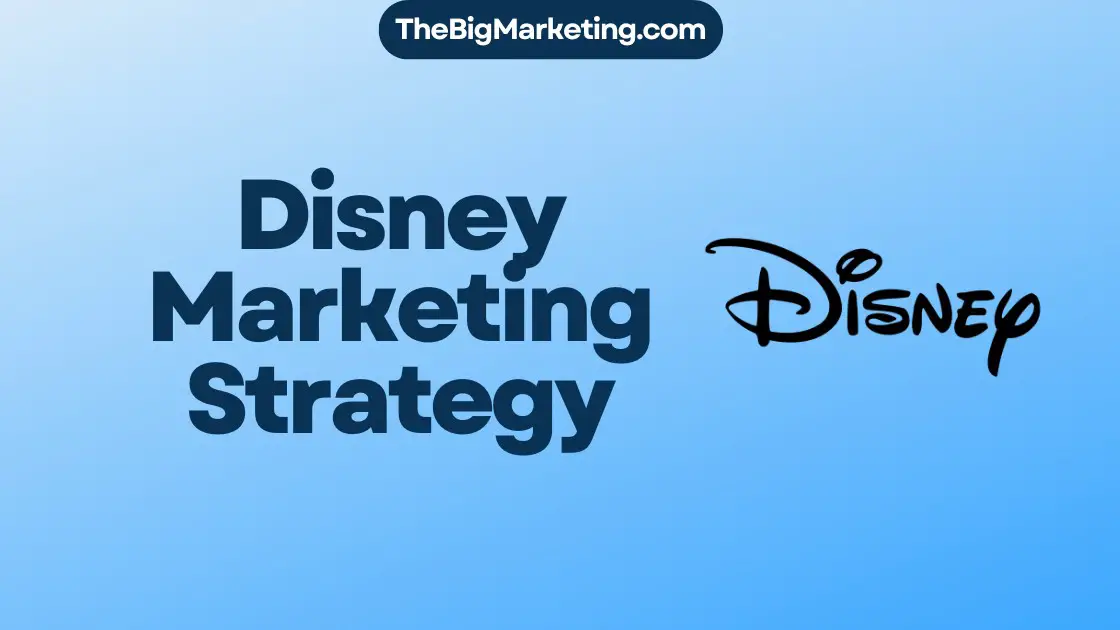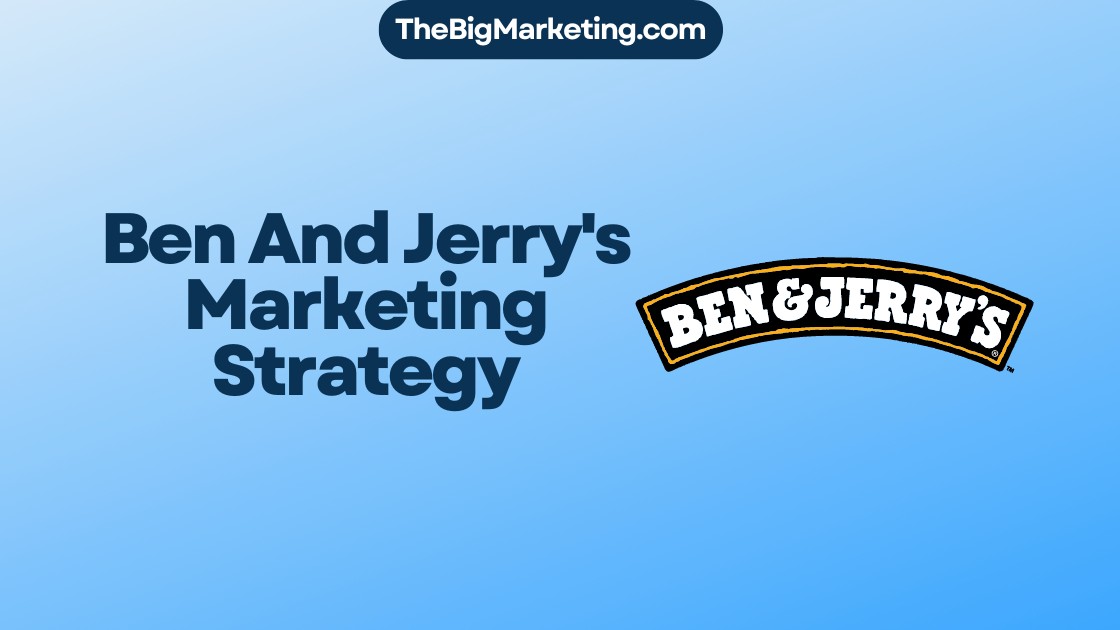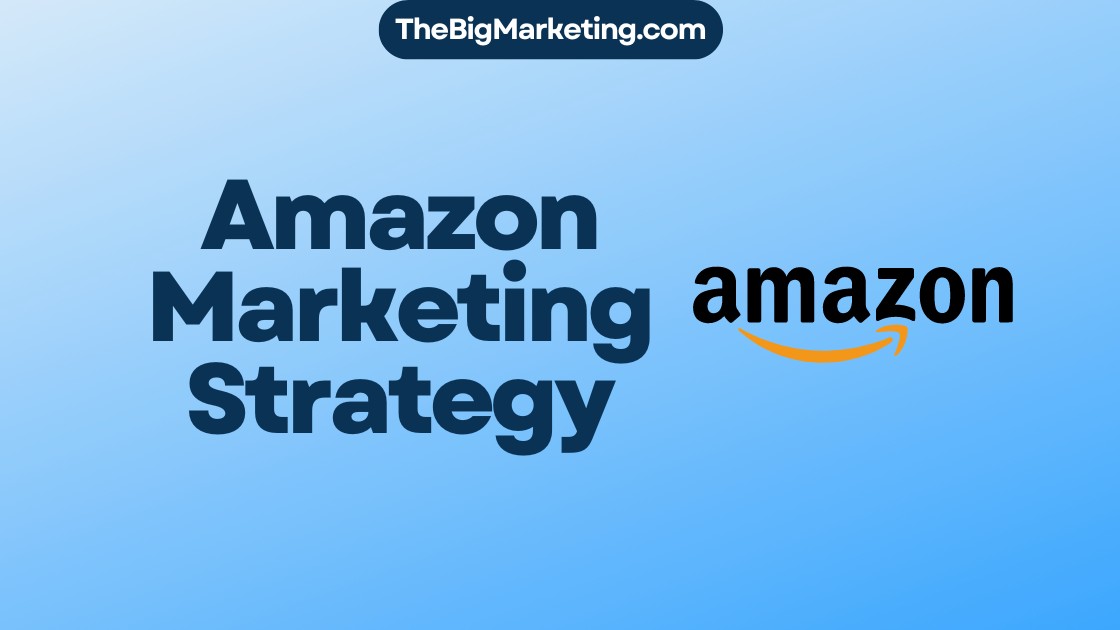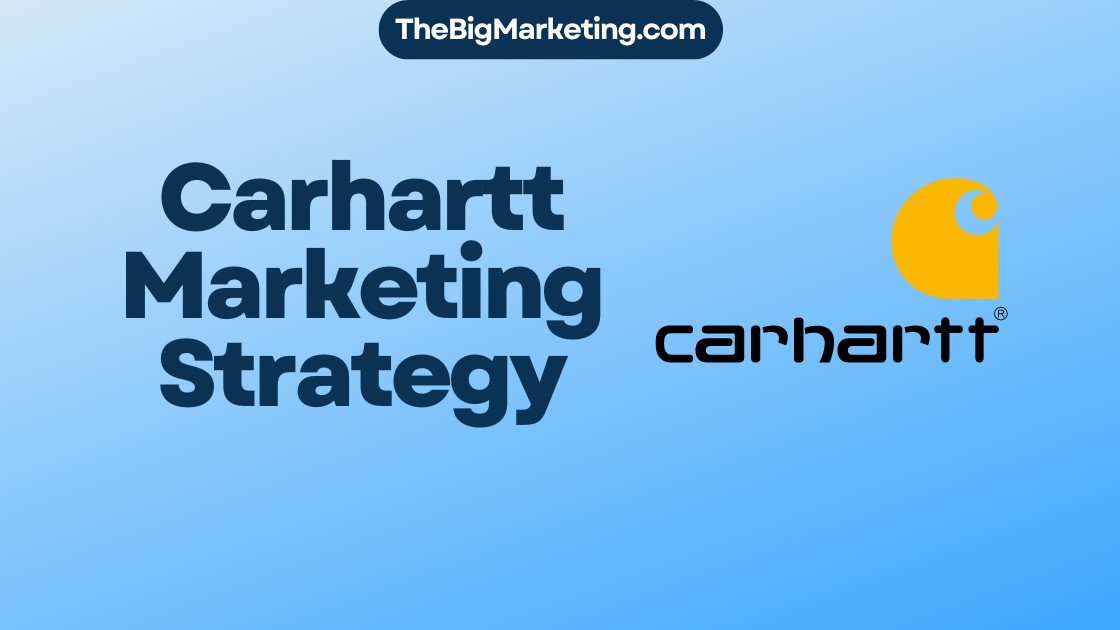Growth marketing and digital marketing are two terms often used interchangeably. However, there is a significant difference between the two approaches. Growth marketing is a data-driven strategy that focuses on acquiring and retaining customers, while digital marketing is a more traditional approach that focuses on raising awareness and generating leads.
Growth marketing strategies involve analyzing data to identify the most effective marketing channels, optimizing conversion rates, and implementing personalized marketing campaigns. It takes a holistic view of the customer journey and aims to affect all 6 Levers of Growth – activation, acquisition, revenue, retention, referral, and resurrection.
On the other hand, digital marketing tactics include email marketing, PPC advertising, content marketing, SEO, social media marketing, and marketing automation. These tactics are typically focused on driving traffic to websites and converting leads through targeted messaging and advertising campaigns.
When it comes to choosing between growth marketing and digital marketing, it ultimately depends on the business goals and resources. Both approaches have their advantages and can be effective in driving business growth. Understanding the differences and benefits of growth marketing and digital marketing is crucial for businesses to make informed decisions and develop effective marketing strategies.
Key Takeaways:
- Growth marketing is a data-driven approach focused on acquiring and retaining customers.
- Digital marketing is a more traditional approach focused on raising awareness and generating leads.
- Growth marketing strategies involve analyzing data and optimizing marketing efforts across the entire customer journey.
- Digital marketing tactics include email marketing, PPC advertising, content marketing, SEO, social media marketing, and marketing automation.
- Choosing between growth marketing and digital marketing depends on business goals and resources.
What is Digital Marketing?
Digital marketing is an essential component of online marketing that utilizes various digital channels and tactics to connect with and engage customers. With the increasing prevalence of the internet and the constant advancements in technology, digital marketing has become a vital strategy for businesses to promote their products and services, increase brand visibility, and drive conversions.
In the realm of digital marketing, there are several strategies and techniques employed to achieve desired results. These include:
- Email Marketing: A highly effective method of promoting products and services through targeted email campaigns.
- PPC Advertising: Pay-per-click advertising enables businesses to display their ads on search engine result pages and pay only when users click on their ads.
- Content Marketing: Content marketing focuses on creating and distributing valuable, relevant, and consistent content to attract and retain a specific target audience.
- SEO (Search Engine Optimization): SEO involves optimizing website content and structure to increase organic visibility and improve rankings on search engine result pages.
- Social Media Marketing: Social media platforms provide businesses with the opportunity to connect and engage with their customers, drive website traffic, and build brand awareness.
- Marketing Automation: Marketing automation refers to the use of software and tools to automate and streamline marketing tasks, such as email campaigns, social media posting, and lead nurturing.
Digital marketing allows businesses to communicate directly with their target audience, reach a global customer base, and measure and analyze the effectiveness of their marketing efforts. It provides the flexibility to adapt marketing strategies and allocate resources based on data-driven insights, ultimately improving the overall return on investment (ROI).
| Pros of Digital Marketing | Cons of Digital Marketing |
|---|---|
|
|
What is Growth Marketing?
Growth marketing is a data-driven, full-funnel approach to marketing that focuses on driving growth in a business. Unlike traditional marketing strategies that primarily focus on raising awareness and generating leads, growth marketing takes a holistic approach to the entire customer journey.
Growth marketers utilize planned strategies, often incorporating growth hacking techniques, to set and achieve SMART goals. These goals are specific, measurable, attainable, relevant, and time-bound, allowing marketers to track progress and make data-driven decisions. By continuously experimenting and optimizing marketing efforts, growth marketers strive to achieve compounding success.
One of the key aspects of growth marketing is its full-funnel approach. This means that growth marketers consider every stage of the customer journey, from awareness to conversion, retention, and advocacy. By focusing on the entire funnel, growth marketers aim to acquire and retain customers, maximize customer lifetime value, and drive long-term sustainable growth.
| Characteristics of Growth Marketing |
|---|
| Data-driven approach |
| Full-funnel marketing |
| SMART goals |
| Growth hacking techniques |
Growth hacking is often associated with growth marketing. It refers to a rapid experimentation approach aimed at discovering the most successful techniques and strategies as quickly as possible. Growth hackers employ creative and unconventional methods to achieve high-impact results, often leveraging technology and automation to scale their efforts.
Overall, growth marketing combines data-driven decision-making, full-funnel marketing strategies, and growth hacking techniques to drive growth and achieve sustainable business success.
Differences Between Digital Marketing and Growth Marketing
When it comes to marketing strategies, it’s important to understand the key differences between digital marketing and growth marketing. While both approaches share the goal of driving business growth, they have distinct focuses, popular plays, budget allocations, and decision-making processes.
Digital Marketing
Digital marketing primarily focuses on the top of the marketing funnel, aiming to raise awareness and generate leads. It leverages various tactics such as search engine optimization (SEO), social media marketing, content marketing, email marketing, and pay-per-click (PPC) advertising to reach and engage potential customers. Digital marketing often involves large budgets allocated towards paid campaigns for increased visibility and lead generation.
Growth Marketing
Growth marketing takes a holistic approach, focusing on the entire customer journey and aiming to affect all 6 Levers of Growth. It goes beyond generating leads and focuses on acquiring and retaining customers throughout the entire funnel. Growth marketing teams run experiments across multiple channels in sprints to optimize their strategies and drive sustainable growth. Unlike digital marketing, growth marketing allows for a more flexible budget allocation, allocating resources based on data-driven insights.
Differences at a Glance
| Aspect | Digital Marketing | Growth Marketing |
|---|---|---|
| Focus | Raising awareness and generating leads | Acquiring and retaining customers throughout the entire funnel |
| Popular Plays | SEO, social media marketing, content marketing, email marketing, PPC advertising | Full-funnel optimization, growth hacking, data-driven experimentation |
| Budget | Large budgets for paid campaigns | Flexible budget allocation based on data-driven insights |
| Goals | Generating awareness and converting leads | Affecting all 6 Levers of Growth |
| Decisions | Campaign and tactic-driven | Data-driven |
As demonstrated, digital marketing and growth marketing have distinct approaches and strategies. While digital marketing focuses on raising awareness and converting leads, growth marketing takes a more comprehensive approach, concentrating on the entire customer journey. By understanding these differences, businesses can make informed decisions about which marketing strategy aligns best with their goals and resources.
Is Digital Marketing a Good Play for Return on Investment (ROI)?
Digital marketing offers numerous benefits for businesses, including cost-effective strategies, the ability to reach specific or broad audiences, drive traffic to websites, and convert leads with precision. However, when it comes to return on investment (ROI), the effectiveness of digital marketing may vary.
One of the main advantages of digital marketing is its cost-effectiveness. Compared to traditional marketing methods, digital marketing campaigns can be executed at a fraction of the cost. Businesses have the flexibility to allocate their marketing budget wisely, taking advantage of various digital channels to reach their target audience.
With digital marketing, businesses have the opportunity to target specific or broad audiences. Through strategic targeting, businesses can identify and reach the right customers, maximizing their chances of converting leads into sales. This level of precision targeting allows for greater efficiency and better control over marketing efforts.
Digital marketing also excels at driving traffic to websites. By leveraging various online channels, such as search engine optimization (SEO), pay-per-click (PPC) advertising, and content marketing, businesses can attract a steady stream of visitors to their websites. Increased website traffic leads to improved visibility and a higher chance of generating leads and conversions.
Furthermore, digital marketing enables businesses to convert leads with precision. With tools like user analytics and tracking, businesses can understand their audience’s behavior and preferences, tailoring their marketing messages to align with their needs. This targeted approach increases the likelihood of converting leads into customers successfully.
While digital marketing offers many advantages, its impact on ROI can vary. While digital marketing campaigns can generate leads and provide short-term ROI, they may not always lead to the desired long-term business growth. Relying solely on digital marketing techniques for ROI can limit the effectiveness of marketing efforts.
To maximize ROI, it’s essential for businesses to employ a holistic approach that combines digital marketing with other growth-oriented strategies. By integrating growth marketing tactics into their marketing mix, businesses can achieve sustainable growth and long-term profitability. Growth marketing focuses on the entire customer journey, aiming to affect all six Levers of Growth.
| Advantages of Digital Marketing for ROI | Disadvantages of Digital Marketing for ROI |
|---|---|
| – Cost-effective marketing strategies | – Limitations in achieving qualified leads and long-term business growth |
| – Specific or broad reach to target audiences | – Varied effectiveness in generating the desired ROI |
| – Ability to drive traffic to websites | |
| – Targeted lead conversion through personalized messaging |
Note: While digital marketing can provide a positive ROI, it’s important for businesses to carefully evaluate their goals and consider the limitations of relying solely on digital marketing for achieving their desired ROI. A holistic approach that integrates growth marketing and other strategies may offer a more comprehensive solution.
Is Growth Marketing a Good Play for ROI?
Growth marketing is a buyer persona-focused strategy that offers several advantages when it comes to maximizing return on investment (ROI). By focusing on the specific needs and preferences of target customers, growth marketing aims to optimize marketing efforts for the highest possible ROI.
One key advantage of growth marketing is continuous optimization. Unlike traditional marketing approaches, growth marketing uses data-driven insights to continually refine strategies and tactics. By analyzing performance metrics and experimenting with different approaches, growth marketing teams can identify the most effective methods for driving growth and increasing ROI.
Another advantage of growth marketing is scalability. As businesses grow, their marketing efforts need to scale accordingly. Growth marketing strategies are designed to adapt and expand as businesses increase their customer base and target new markets. This scalability allows for sustained growth and increased ROI over time.
In addition to focusing on buyer personas and continuous optimization, growth marketing also leverages customer referrals to drive ROI. By providing exceptional experiences and exceeding customer expectations, growth marketers encourage satisfied customers to refer their friends, family, and colleagues to the business. These customer referrals can result in new leads and conversions, further boosting ROI.
Overall, growth marketing offers a comprehensive approach to maximize ROI. Its buyer persona-focused strategies, continuous optimization, scalability, and ability to leverage customer referrals make it a cost-effective and results-driven strategy for achieving long-term ROI.
| Growth Marketing Advantages | Description |
|---|---|
| Buyer Persona-Focused | Growth marketing strategies are tailored to the specific needs and preferences of target customers, increasing the likelihood of conversion and ROI. |
| Continuous Optimization | Growth marketing constantly analyzes and adjusts strategies based on data, ensuring that resources are allocated to the most effective tactics for ROI. |
| Scalability | Growth marketing strategies can be scaled as businesses grow, allowing for sustained growth and increased ROI over time. |
| Customer Referrals | By providing exceptional experiences, growth marketing encourages satisfied customers to refer others, effectively increasing leads and ROI. |
Advantages of Digital Marketing
Digital marketing offers numerous advantages for businesses, making it a highly effective strategy in today’s competitive landscape. Let’s explore some of the key advantages:
1. Cost-Effective
Digital marketing provides a cost-effective alternative to traditional marketing channels. With a well-planned digital marketing campaign, businesses can reach a large audience at a fraction of the cost compared to traditional advertising methods. By optimizing the allocation of marketing budgets, businesses can maximize their return on investment (ROI) and achieve tangible results.
2. Specific or Broad Reach
One of the main advantages of digital marketing is its ability to offer both specific and broad reach. Businesses can target specific customer segments based on demographics, interests, and behaviors. This allows for customized messaging and precise targeting that resonates with the intended audience. Simultaneously, digital marketing also enables businesses to reach a broad audience through various online platforms, increasing brand visibility and awareness.
3. Drive Traffic to Website
Digital marketing plays a vital role in driving targeted traffic to a business’s website. By leveraging tactics such as search engine optimization (SEO), pay-per-click (PPC) advertising, and content marketing, businesses can attract quality traffic to their website. This increased website traffic opens up opportunities for engagement, lead generation, and ultimately, conversions.
4. Targeted Lead Conversion
With digital marketing, businesses can focus on attracting and converting leads that are most likely to convert into customers. By utilizing data-driven strategies and analytics tools, businesses can identify their target audience’s preferences and pain points, allowing for targeted messaging and personalized customer experiences. This targeted approach improves lead quality, resulting in a higher conversion rate and increased revenue.
| Advantage | Description |
|---|---|
| Cost-Effective | Digital marketing is a cost-effective alternative to traditional marketing channels, allowing businesses to allocate their budgets more efficiently. |
| Specific or Broad Reach | Digital marketing offers the flexibility to target specific customer segments while also reaching a broader audience to increase brand visibility. |
| Drive Traffic to Website | Digital marketing tactics such as SEO and PPC advertising help drive targeted traffic to a business’s website, increasing opportunities for engagement and conversions. |
| Targeted Lead Conversion | Digital marketing allows for targeted messaging and personalized experiences, improving lead quality and enhancing the conversion rate. |
Advantages of Traditional Marketing
Traditional marketing channels offer several advantages compared to digital marketing. These advantages include:
1. Targeting based on customer data
Traditional marketing allows businesses to target specific audience segments based on customer data. By analyzing demographic information, psychographics, and market research, traditional marketing campaigns can be tailored to reach the right audience at the right time.
2. Ready-to-use marketing funnels
Traditional marketing utilizes well-established marketing funnels that have been proven to generate results. These funnels are ready to use, saving businesses time and effort in developing new marketing strategies from scratch.
3. Building brand awareness
Traditional marketing still plays a crucial role in building brand awareness. By utilizing traditional media such as television, radio, and print, businesses can reach a wide audience and create brand recognition that is often remembered by consumers.
4. Customer retention
Traditional marketing allows for direct customer engagement through phone calls, emails, or live chat support. This personal interaction fosters a sense of trust and loyalty among customers, increasing customer retention rates and creating a loyal customer base.
| Advantages of Traditional Marketing |
|---|
| Targeting based on customer data |
| Ready-to-use marketing funnels |
| Building brand awareness |
| Customer retention |
Traditional marketing complements digital marketing strategies and provides an effective way to communicate with customers, promote products and services, and build a loyal customer base. By leveraging the unique advantages it offers, businesses can enhance their marketing efforts and achieve their goals.
Disadvantages of Digital Marketing
Despite its advantages, digital marketing also has some disadvantages. It is important for businesses to be aware of these challenges in order to make informed decisions about their marketing strategies.
- Expensive Production: Digital marketing can be costly in terms of production costs, especially when creating high-quality content such as videos, graphics, or interactive elements. The need for professional equipment or hiring experts can add up quickly.
- Limited Budgets: Many businesses have limited marketing budgets, which can restrict their ability to fully utilize digital marketing channels. Competition for ad space and keywords can drive up costs, making it challenging for businesses with limited resources to effectively reach their target audience.
- Limited Control over Message Delivery: Unlike traditional marketing methods, digital marketing relies on algorithms and platforms that may change over time. This lack of control over message delivery can result in content being displayed in unexpected ways or algorithms prioritizing certain types of content, making it difficult for businesses to have full control over their messaging.
While these disadvantages exist, they can be mitigated with proper planning, budget allocation, and staying updated on the latest digital marketing trends and algorithms.
Disadvantages of Digital Marketing
| Disadvantage | Description |
|---|---|
| Expensive Production | Digital marketing requires investment in high-quality content creation, which can be costly. |
| Limited Budgets | Businesses with limited marketing budgets may struggle to effectively utilize digital marketing channels. |
| Limited Control over Message Delivery | Digital marketing relies on algorithms and platforms, resulting in limited control over how messages are delivered. |
Despite these challenges, digital marketing continues to be a valuable strategy for businesses, offering numerous advantages in reaching and engaging with customers. However, it is important for businesses to carefully consider the potential drawbacks and develop strategies to mitigate them.
Disadvantages of Traditional Marketing
While traditional marketing has its merits, it also comes with its fair share of disadvantages that businesses need to consider. Understanding these drawbacks can help companies make informed decisions when crafting their marketing strategies.
1. Expensive Advertising
Traditional marketing often involves expensive production costs for mediums such as print advertisements, television commercials, and billboards. These costs can quickly add up, especially for small businesses with limited budgets. Additionally, the reach and impact of these advertisements may vary, making it essential to carefully assess the return on investment.
2. Limited Targeting
When compared to digital marketing, traditional marketing techniques have limited targeting capabilities. Businesses are often unable to precisely target specific demographics or interests, resulting in the distribution of advertisements to a broader audience. This lack of precision can lead to wasted resources and exposure to individuals who may not be interested in the product or service being promoted.
3. Lack of Real-Time Data
One of the significant disadvantages of traditional marketing is the absence of real-time data and analytics. Unlike digital marketing, which provides immediate insights and metrics, traditional marketing methods make it challenging to measure the effectiveness of campaigns on the fly. Without real-time data, businesses may find it difficult to make timely adjustments and optimize their marketing strategies for better outcomes.
Overall, traditional marketing can be costly, lacks precise targeting, and doesn’t offer the real-time data that is vital for making informed decisions in today’s fast-paced business landscape.
Traditional Marketing vs. Digital Marketing
| Aspect | Traditional Marketing | Digital Marketing |
|---|---|---|
| Advertising Production Costs | Expensive | Varies (can be cost-effective) |
| Targeting Capabilities | Limited | Precise |
| Real-Time Data and Analytics | Lack of real-time data | Real-time insights and analytics |
What is Growth Marketing?
Growth marketing is a hybrid approach that combines growth-oriented practices with traditional marketing strategies. It focuses on acquiring and retaining customers, optimizing marketing efforts, and using data-driven strategies to drive business growth.
Growth marketing aims to achieve long-term, sustained growth by nurturing leads through the entire customer journey and leveraging customer referrals. Unlike traditional marketing, which primarily focuses on raising awareness and generating leads, growth marketing takes a holistic approach to the customer lifecycle, considering all touchpoints and interactions.
By utilizing data and analytics, growth marketers are able to identify opportunities for optimization and experimentation. They continuously test different marketing tactics, channels, and messaging to find what works best for their target audience.
One of the key principles of growth marketing is setting SMART goals. These goals are specific, measurable, attainable, relevant, and time-bound. With a clear focus on performance indicators and metrics, growth marketers can track their progress and make data-driven decisions to enhance their marketing strategies.
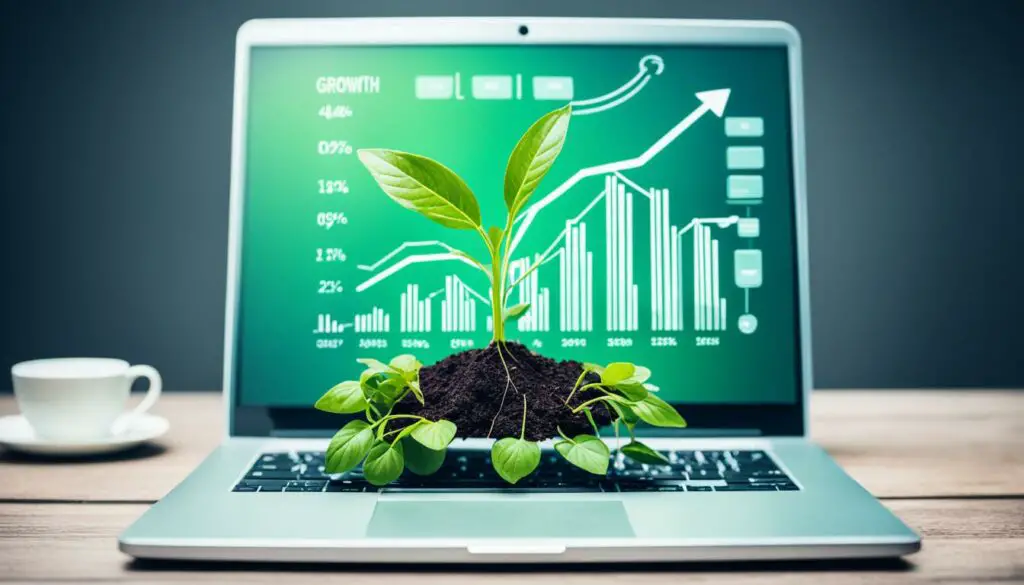
Benefits of Growth Marketing
The benefits of growth marketing are numerous:
- Customer-Centric Approach: Growth marketing puts the customer at the center of all marketing efforts, ensuring a personalized and relevant experience.
- Optimization and Experimentation: By constantly testing and iterating, growth marketers optimize their strategies and achieve incremental improvements over time.
- Cost-Effective Results: With a focus on data-driven decision-making, growth marketing allows businesses to allocate their resources efficiently and maximize their return on investment (ROI).
- Sustainable Growth: By nurturing leads and leveraging customer referrals, growth marketing creates a sustainable foundation for long-term business growth.
In summary, growth marketing combines the best of traditional marketing strategies with a data-driven, customer-centric approach. It provides businesses with the tools and methodologies to achieve sustainable growth and maximize their marketing impact.
Conclusion
Growth marketing and digital marketing are two valuable strategies for businesses in the modern business landscape. Digital marketing offers a cost-effective way to reach a specific or broad audience and drive traffic to a website, with a focus on targeted lead conversion. On the other hand, growth marketing takes a data-driven approach and aims for long-term ROI and sustainable business growth.
The choice between growth marketing and digital marketing ultimately depends on specific business goals and available resources. Digital marketing is ideal for businesses looking to generate immediate results and optimize their marketing efforts. Growth marketing, on the other hand, focuses on the entire customer journey and strategically impacts all 6 Levers of Growth to drive compounding success.
By understanding the differences and benefits of growth marketing and digital marketing, businesses can make informed decisions to drive sustainable growth. Whether they choose to prioritize cost-effective reach and targeted lead conversion or focus on long-term ROI and sustainable business growth, both growth marketing and digital marketing have their merits in today’s competitive business environment.
FAQ
What is the difference between Growth Marketing and Digital Marketing?
Growth marketing is a data-driven approach that focuses on acquiring and retaining customers, while digital marketing is a more traditional approach that focuses on raising awareness and generating leads.
What are the strategies used in Growth Marketing?
Growth marketing uses planned strategies, sets SMART goals, and tracks data to experiment and optimize marketing efforts. It also leverages growth hacking, a rapid experimentation approach to discover successful techniques and strategies.
What tactics are used in Digital Marketing?
Digital marketing includes strategies such as email marketing, PPC advertising, content marketing, SEO, social media marketing, and marketing automation to communicate with the audience, drive website traffic, and automate marketing operations.
What are the benefits of Growth Marketing?
Growth marketing offers advantages such as being buyer persona-focused, continually optimizing efforts, scalability, leveraging customer referrals, and tracking ROI across the customer lifecycle.
What are the benefits of Digital Marketing?
Digital marketing provides benefits such as cost-effective reach, specific or broad audience targeting, driving website traffic, and allowing for targeted lead conversion.
How are the goals different between Digital Marketing and Growth Marketing?
Digital marketing goals focus on generating awareness and converting leads, while growth marketing looks at the entire customer journey and strategizes to affect all 6 Levers of Growth.
What are the advantages of Traditional Marketing?
Traditional marketing offers advantages such as targeting based on customer data, ready-to-use marketing funnels, building brand awareness, and customer retention.
What are the disadvantages of Digital Marketing?
Digital marketing can be expensive in terms of production costs, limited by budgets, and lacks direct control over message delivery as it relies on algorithms and platforms that may change.
What are the disadvantages of Traditional Marketing?
Traditional marketing involves expensive advertising production costs, limited targeting compared to digital marketing, and lacks real-time data and analytics to measure campaign effectiveness.
What is Growth Marketing?
Growth marketing is a hybrid approach that combines growth-oriented practices with traditional marketing strategies. It focuses on acquiring and retaining customers, optimizing marketing efforts, and using data-driven strategies to drive business growth.
Which strategy should I choose, Growth Marketing or Digital Marketing?
The choice between Growth Marketing and Digital Marketing depends on specific business goals and resources. Understanding the differences and benefits can help businesses make strategic decisions to drive sustainable growth.
